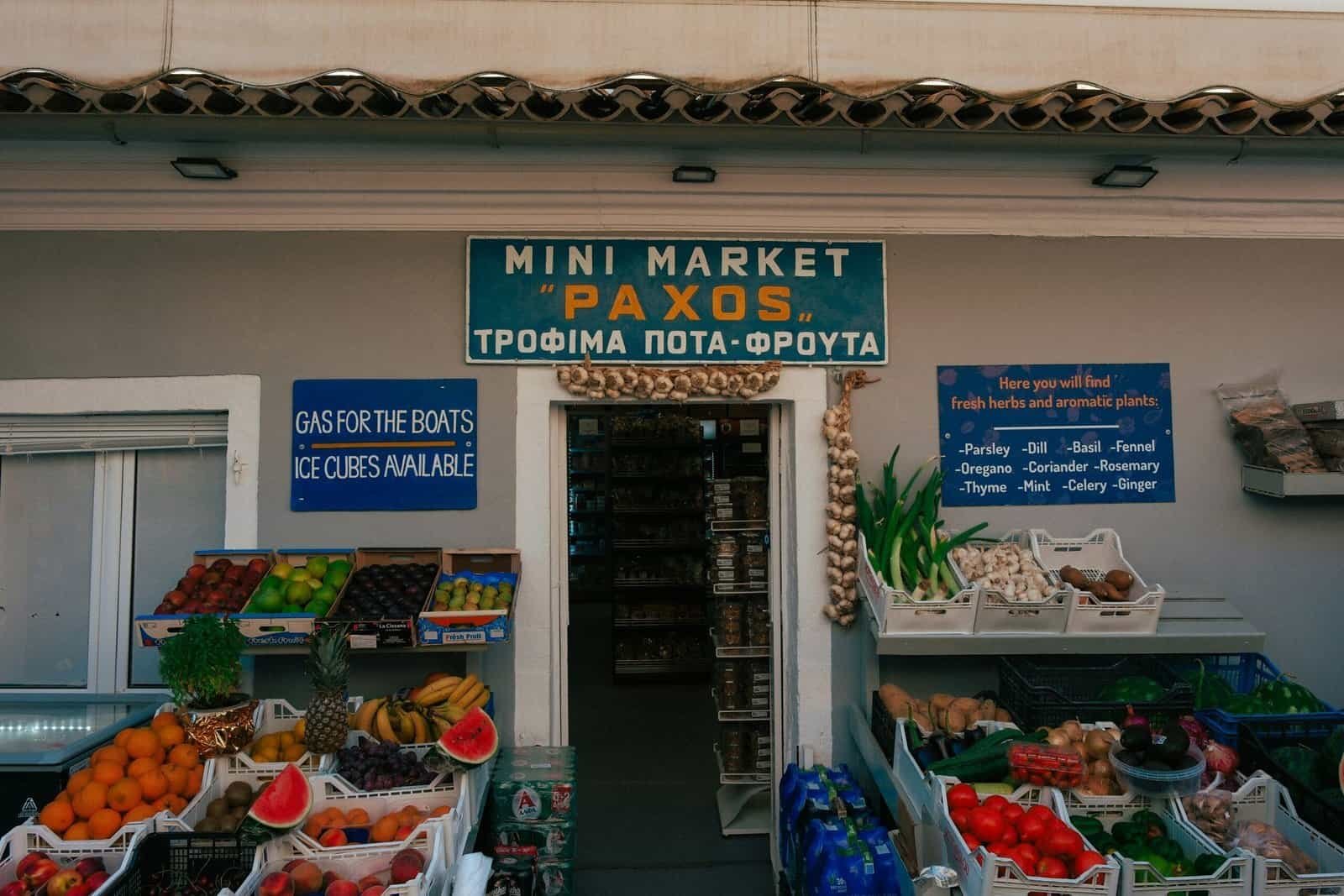?Are you curious how Hyperspace can make buying, selling, and managing NFTs across Solana and other chains easier for you?

Hyperspace – A Solana NFT Aggregator And Trading Platform With Cross-chain Features
This article explains what Hyperspace is, how it works, and what it means for you as a collector, trader, or creator. You’ll find practical details on features, supported wallets and blockchains, fees, security, and step-by-step guidance so you can use the platform confidently.
What is Hyperspace?
Hyperspace is a marketplace aggregator and trading interface built around the Solana ecosystem that gives you access to NFT listings and markets across multiple blockchains. It combines search and discovery tools, consolidated order books, cross-chain transfer options, and trading tools into a single interface, making it easier for you to find and act on NFT opportunities without switching between many marketplaces.
You can think of Hyperspace as a unified storefront and toolkit that pulls listings from different marketplaces, standardizes the buying and selling experience, and enables cross-chain transfers for assets that support bridging.
Why an aggregator matters for you
Aggregators save you time and reduce missed opportunities by bringing fragmented liquidity together. Instead of checking separate marketplaces for the same collection, Hyperspace gives you one place to see the best prices, real-time floor updates, and market depth. This helps you make faster and better-informed decisions while reducing manual overhead.
Aggregators also improve price discovery and can reduce slippage by routing orders to the best available listings across platforms.
Core features of Hyperspace
Below are the primary capabilities you’ll interact with on Hyperspace. Each feature is designed to give you convenience, transparency, or new functionality in your NFT activity.
Aggregated marketplace search and listings
You’ll be able to search collections and tokens across several marketplaces at once. Results are normalized so you can compare prices, traits, seller reputation, and fees from a single view, rather than jumping between different UIs.
Search filters and sorting help you find rare traits, floor listings, or bundles, and you’ll get live updates when prices change or new listings appear.
Cross-chain trading and bridging
Hyperspace supports cross-chain transfers for NFTs and wrapped assets using bridges and interoperability protocols. This means you can move assets between Solana and other chains (for example, Ethereum or Polygon) when supported by the asset’s contract and available bridge infrastructure.
Cross-chain capabilities allow you to access markets and buyers on other chains while keeping your base activity on Solana for faster, cheaper transactions as needed.
Native wallet support and non-custodial flow
You’ll connect popular Solana wallets directly (like Phantom or Solflare) and supported EVM wallets (like MetaMask) for cross-chain activity. Trades and approvals are generally non-custodial, so you retain control of your keys and assets—Hyperspace acts as a routing and UX layer.
Some premium features or gas optimization services may request temporary approvals; always review permissions carefully.
Unified order book and smart routing
Hyperspace aggregates order books and uses smart routing logic to find the best available execution. When you place a buy or sell order, the platform can split or route the transaction to capture the best price across sources, helping minimize slippage and track fulfillment.
This system makes it more likely that your market or limit orders will execute at competitive prices.
Advanced analytics and price history
You’ll find tools to track floor prices, historical sales, and volume by collection, wallet, or trait. These analytics help you evaluate rarity and market momentum, supporting more informed bidding or listing decisions.
Visual charts, filters by timeframe, and exporter tools are commonly available so you can perform deeper analysis off-platform if you wish.
Bulk operations and portfolio management
Hyperspace typically provides bulk listing, bulk transfer, and batch purchase capabilities so you can manage many NFTs at once. Portfolio views give you an overview of your holdings, unrealized gains, and recent activity.
These features are especially helpful if you manage collections or multiple wallets.
Royalties and creator support
The platform supports creator royalty enforcement where possible, passing royalty payments to creators per the collection’s standards. You’ll see royalty breakdowns before a purchase so you understand the net proceeds to sellers and payments to creators.
Where on-chain enforcement isn’t possible due to marketplace constraints, Hyperspace attempts to honor creator fees in the routing logic.
How Hyperspace works (technical overview)
This section explains the building blocks that power cross-chain aggregation and trading so you can understand the mechanics behind the user experience.
Indexing and marketplace connectors
Hyperspace runs indexers and connectors that pull listings and offers from multiple marketplaces and on-chain data sources. The indexer normalizes metadata, token standards, and order formats so the UI can present consistent results.
Indexing services continuously listen for listings, sales, and transfers to keep the UI up to date.
Aggregation and smart routing layer
The aggregation layer compares prices and fees across sources. When you execute an action, the routing engine determines the optimal path—taking into account marketplace fees, bridge costs, expected slippage, gas, and user-specified preferences.
The engine can split orders or use atomic cross-market actions to improve execution quality.
Bridge integration for cross-chain transfers
Cross-chain movements are done through integrated bridges and interoperability protocols. Many platforms rely on well-known bridges (for example, Wormhole on Solana or other cross-chain primitives) to lock, mint, or wrap assets across chains.
Hyperspace coordinates the transaction flow so you can initiate a transfer in the UI and complete necessary approvals in connected wallets.
Smart contracts and on-chain settlement
Trades settle via smart contracts on each chain. Hyperspace either interacts directly with marketplace contracts or uses its own settlement contracts that facilitate cross-source or off-chain order matching. All critical steps are recorded on-chain so you can verify transactions via block explorers.
Off-chain orderbooks and on-chain settlement (where applicable)
Some marketplaces use off-chain orderbooks with on-chain settlement; Hyperspace bridges these workflows by communicating with central order providers and submitting matches to on-chain settlement contracts when a trade executes.
This hybrid approach preserves speed while maintaining on-chain finality.
Supported blockchains and wallets
Hyperspace’s cross-chain utility depends on the chains and wallets it supports. Below is a likely layout of supported options you’ll encounter; check Hyperspace’s official docs for the most current list.
| Layer | Chains (example) | Typical Wallets |
|---|---|---|
| Solana-native | Solana | Phantom, Solflare, Sollet |
| EVM-compatible | Ethereum, Polygon, BNB Chain, Arbitrum | MetaMask, Coinbase Wallet, Rainbow |
| Bridged environments | Wrapped assets on destination chains | Same EVM wallets as above |
You’ll typically connect a Solana wallet first if you’re primarily using Solana assets, and connect an EVM wallet when bridging or interacting with marketplaces on EVM chains.

Fees and tokenomics
Understanding fees helps you calculate true costs. Platforms vary, but here’s a common fee structure you’ll find on NFT aggregators like Hyperspace.
Typical fee components
- Marketplace fee: A percentage charged on each sale (e.g., 2–5%).
- Creator royalty: Set by the collection, usually 2.5–10%.
- Bridge fee: Fixed or percentage-based cost for cross-chain transfers.
- Network fees: Transaction fees on the source and destination chains.
- Service fee: Additional platform fee for aggregation or advanced features (may be included in marketplace fee).
Below is an example fee table to help you estimate costs in a transaction.
| Fee Type | Typical Range | Notes |
|---|---|---|
| Marketplace fee | 1% – 5% | Platform’s cut for facilitating sale |
| Creator royalty | 2.5% – 10% | Set by collection, may vary |
| Bridge fee | $1 – $50 (or 0.1%–1%) | Varies by bridge and asset |
| Network (gas) | Varies by chain | Solana fees are low; Ethereum can be high |
| Service fee | 0% – 2% | For premium routing or instant swaps |
Always check the confirmation modal before signing a transaction; it should show the combined fees so you see net proceeds or total cost.
Tokenomics and utility token (if present)
Many platforms have utility tokens or governance tokens that reward users, provide fee discounts, or enable staking. If Hyperspace has a native token, it might be used for:
- Fee discounts or rebates
- Staking for platform rewards
- Governance voting on features and fee structures
- Liquidity incentives for market makers
If you plan to hold or use the token, review tokenomics documents for supply, vesting, and allocation details.
How to use Hyperspace: step-by-step
This section helps you get started with practical steps for common tasks. The flow assumes you already have a wallet with NFTs or funds.
Connecting your wallet
- Open Hyperspace and click the connect wallet button.
- Choose your wallet (Phantom for Solana, MetaMask for EVM).
- Approve the connection in your wallet and confirm any requested permissions.
- Optionally, connect multiple wallets if you want cross-chain access.
Always verify the URL and make sure you’re on the official domain before connecting.
Searching and comparing listings
- Use the search bar to find a collection or a specific token ID.
- Apply filters for traits, price range, or seller reputation.
- Compare listings across marketplaces—Hyperspace will show the best available prices, fees included.
- You can set alerts for price movements or new listings to act quickly.
Buying an NFT
- Select the listing you want to buy and review all fees, royalties, and net cost.
- Choose whether to buy on-chain or use any instant-swap liquidity options (if available).
- Confirm and sign the transaction in your wallet.
- For cross-chain purchases, you may need to confirm bridging steps; follow the prompts and wait for confirmations on both chains.
Selling and listing an NFT
- Navigate to your inventory and select the NFT to list.
- Choose listing type: fixed price, auction, or offer-to-sell.
- Set price, duration, and whether you accept offers from other chains (if cross-chain sale is supported).
- Approve marketplace listing in your wallet; the listing will propagate to supported marketplaces via Hyperspace.
Making offers and negotiating
- You can place offers on NFTs from other wallets or chains.
- Hyperspace will route offers and display active offers to sellers across connected marketplaces.
- If the seller accepts, settlement occurs according to the chosen chain and required bridge operations.

Security practices and risks
You retain responsibility for your keys and approvals. Here are best practices and potential risks to consider.
Wallet security and approvals
- Use hardware wallets where possible for higher-value transactions.
- Inspect approval requests—only approve what’s needed.
- Revoke unused approvals periodically using wallet tools or third-party revocation services.
Bridge and cross-chain risks
- Bridges introduce additional risk vectors: time delays, smart-contract vulnerabilities, and potential loss if the bridge is exploited.
- Consider transaction insurance or smaller tests before moving large collections.
Smart contract risk
- Smart contracts, even audited ones, can have bugs. Only interact with trusted contracts and review audit reports if you plan to use advanced features.
- Avoid signing transactions that request unlimited approvals unless you trust the contract fully.
Counterparty risk and scams
- Verify seller reputation and token provenance—fake or misrepresented NFTs exist.
- Watch out for social-engineering scams. Never reveal your private key or seed phrase.
Benefits for collectors, traders, and creators
Different users will gain different advantages from Hyperspace’s tools and integrations.
For collectors
You’ll get consolidated price discovery, alerts, and the ability to act on listings across marketplaces without multiple tabs. This reduces missed opportunities and simplifies portfolio management.
For traders
You’ll appreciate the smart routing, aggregated liquidity, and analytics tools that help you execute strategies faster and with potentially lower slippage.
For creators and projects
Creators benefit from broader market exposure and enforced royalties (where enforceable). Aggregated marketplaces mean more eyes on your collection, and analytics can help you understand secondary market behavior.

How Hyperspace compares to other platforms
Below is a high-level comparison of Hyperspace with common types of NFT platforms to help you understand unique strengths.
| Feature | Hyperspace (aggregator) | Single-marketplace (e.g., Magic Eden) | Large multi-chain marketplace (e.g., OpenSea) |
|---|---|---|---|
| Cross-market price aggregation | Yes | No | Limited |
| Cross-chain trading | Yes | Rare | Partial |
| Best-price routing | Yes | No | Partial |
| Non-custodial wallet support | Yes | Yes | Yes |
| Deep analytics | Often robust | Varies | Varies |
| Bridge support | Yes | No | Limited |
The aggregator approach focuses on bringing multiple sources together, while single marketplaces focus on their native liquidity and community.
Practical tips and best practices
These practical tips will help you use Hyperspace more effectively and safely.
- Test with small amounts when using cross-chain features first.
- Track total cost including royalties and bridge fees before signing.
- Use alerts for collections you follow so you can act quickly on price dips.
- Review contract approvals and revoke them when not needed.
- Monitor platform updates and follow official channels for announcements.

Governance, community, and future roadmap
If Hyperspace has a governance model, you may be able to vote on fees, integrations, and feature priorities. Community channels (Discord, Telegram, or forums) are where new features and bug fixes are discussed; participating can give you early insights.
Roadmaps often include planned chain integrations, analytics upgrades, improved routing, and liquidity incentives. Keep an eye on official announcements for a timeline and any token-related launches or airdrops.
Common FAQs
Below are answers to frequent questions you might have.
Q: Can all NFTs be bridged across chains? A: Not all NFTs can be bridged. Bridging typically requires a wrapped representation or explicit support from the collection’s smart contracts. Always check a token’s bridging capability before attempting transfer.
Q: Will royalties be enforced cross-chain? A: Royalties depend on the destination marketplace and the bridging method. Hyperspace attempts to honor creator royalties, but enforcement can be limited by the destination market’s rules and technical constraints.
Q: How long do cross-chain transfers take? A: Transfer time varies by bridge and chain—minutes to hours in some cases. Congestion or manual confirmation steps can increase the timeline.
Q: Is Hyperspace custodial? A: Hyperspace is typically non-custodial for basic trading flows; you retain control of your keys. Any custodial or custodial-like features will be explicit and require separate consent.
Q: What happens if a bridge fails mid-transfer? A: If a bridge experiences an issue, resolution depends on the bridge operator. Some bridges include recovery or manual processing mechanisms, but you should treat cross-chain transfers as having additional risk.
Regulatory and legal considerations
NFT marketplaces and cross-chain platforms operate in a regulatory environment that can change. Consider the following:
- Taxes: NFT sales, royalties, and cross-chain transfers may have tax implications depending on jurisdiction. Keep records of transactions for reporting.
- Compliance: Platforms may implement KYC or AML checks for certain flows, especially fiat on-ramps or high-value transfers.
- Intellectual property: Ownership of an NFT does not always confer IP rights; review collection licensing terms.
Final thoughts
You’ll find Hyperspace useful if you want a streamlined way to access listings, execute trades, and move NFTs between chains without juggling multiple platforms. Aggregation, smart routing, and cross-chain options can save you time and potentially money, but you should always weigh the added complexity of bridges and smart contract interactions.
If you plan to use Hyperspace, start with small tests, verify fees and permissions before signing, and stay informed through official channels. With careful use, the platform can be a powerful addition to your NFT toolkit.
If you’d like, I can provide a short checklist for your first transaction on Hyperspace or a step-by-step walkthrough tailored to your wallet and target chain. Which wallet and chain are you using first?
